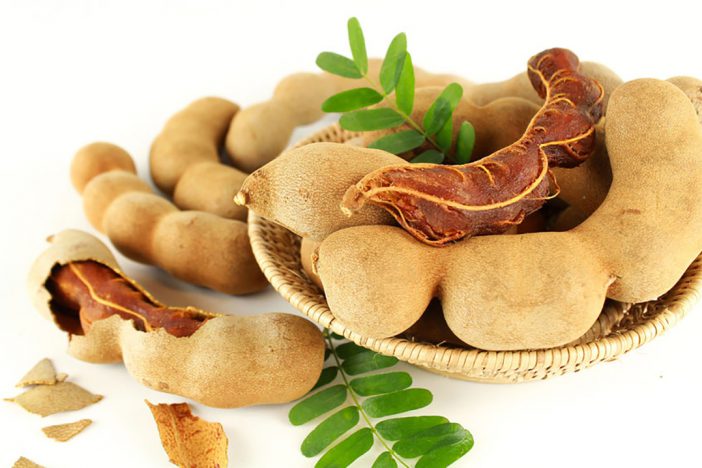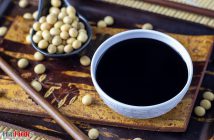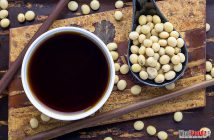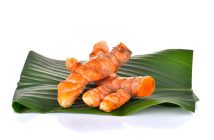Fruit, leaflets and flowers of a tamarind are used in Thai cooking, but the pulp of the ripe tamarind fruit is more frequently used to provide sourness.
Tamarind or ma kham in Thai, Tamaridus indica, is a leguminous tree that produces the pod-like fruit, which contains the edible acidulous pulp that is often used as a “sour” ingredient in Thai cuisine. Its unripe fruit has a brownish green shell with light green flesh inside. When the fruit is ripe, it has a gap between its shell and pulp, the shell turns tan and hard, but is easy to break, and the pulp is dark reddish brown and fleshy, which surrounds glossy dark brown seeds. The pulps, veins and seeds of some of ripe fruit are pressed together to form a wad called ma kham peak in Thai, which may be wrapped in plastic sheet. This can be found in every Thai market.
Tamarind Paste
Tamarind paste (also called tamarind juice, puree, liquid or water) is prepared by combining some of the shelled ripe fruit with water and squeezing out the paste. The paste is used in many Thai dishes like curries, soups and sauces to add sourness. In dry seasons, since it is difficult to find lime fruit, but it is a harvesting period of the ripe tamarind fruit, the tamarind paste is often used to replace the lime juice.
The prepared version of the tamarind paste can be found in Indian and Asian stores. Lime juice or vinegar can be used as substitutes of the tamarind paste.
Other Culinary Uses
Unripe fruit, leaflets (young leaves) and flowers of the tamarind are also used in Thai cooking, all also to provide a sour taste. The ripe sweet tamarinds are a delight to eat as dessert.






1 Comment
Wonderful write-up, I am normal visitor on the site, maintain up the nice operate, and It’s going to become a regular visitor for a long time.